ST. GEORGE — It’s the pioneer equivalent of beating swords into plowshares.
A cannon solved a dilemma encountered early in the construction of a symbol of peace, the St. George Temple, the longest-operating temple of The Church of Jesus Christ of Latter-day Saints. Church members consider temples the holiest of buildings, the house of the Lord.
As crews began work in 1871, they discovered marshy ground on part of the temple site. Wagons sank in the ground, said Emily Utt, a church historian. Pioneer planners decided to use local basalt to firm up the foundation, but they needed something to drive chunks of the black rock into the bog.
“The only thing they had in town that was heavy enough was a cannon that they had purchased from California and brought to St. George,” Utt said. “They filled that iron cannon with lead and then encased it in some timbers and used that as a pile driver.”
Horse-drawn pulleys lifted the cannon 30 feet into the air and turned it into a power tool, pounding the basalt into solid foundation footings, said Brent Roberts, director of the church’s Special Projects Department, during a press briefing Friday on the temple grounds.
The basalt displaced the water and withstood the alkali in the soil, which would have eaten away at the slabs of sandstone that pioneer workers then placed on top of the basalt. Six years later, Brigham Young presided over the 1877 dedication of the first temple completed by the Saints after they left Nauvoo and the temple they built there to head west.
The St. George Temple is now one year into a 30-month renovation project. Work on the foundation is one of the highlights, though historians and work crews are encountering other examples of pioneer craftsmanship and issues related to the 1970s renovation like asbestos and lead paint, which have been painstakingly removed.
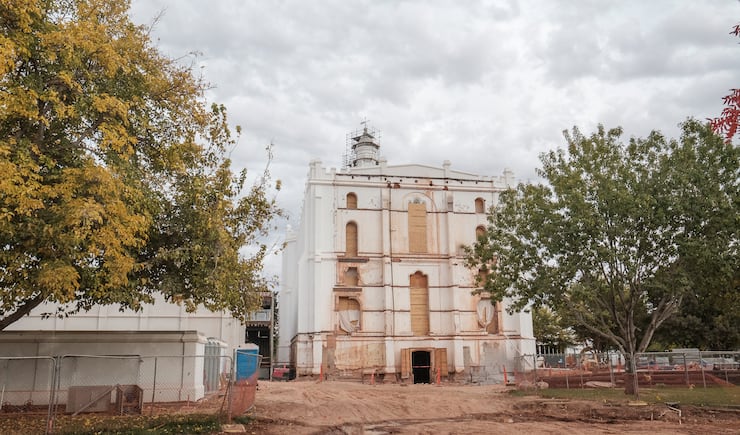
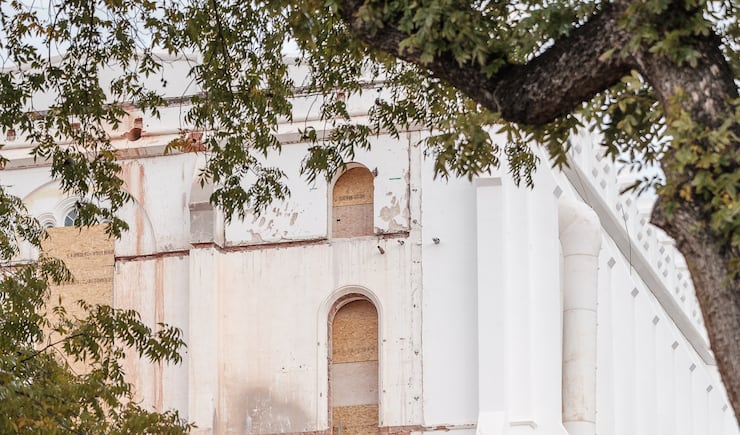
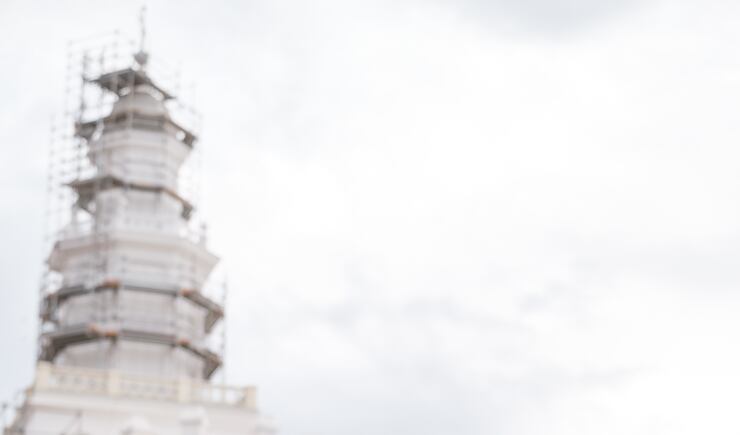
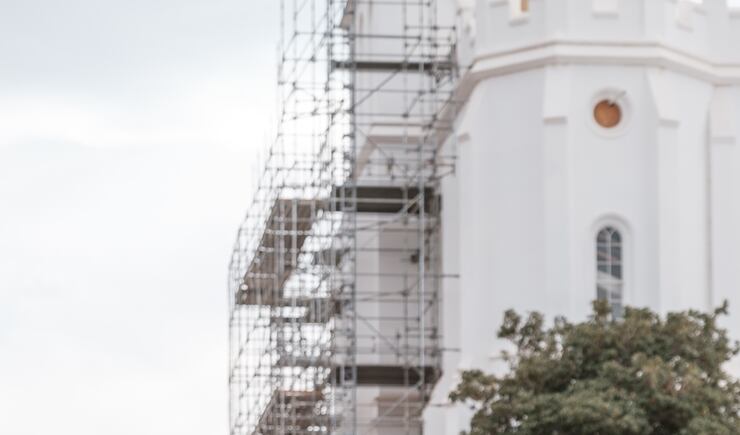
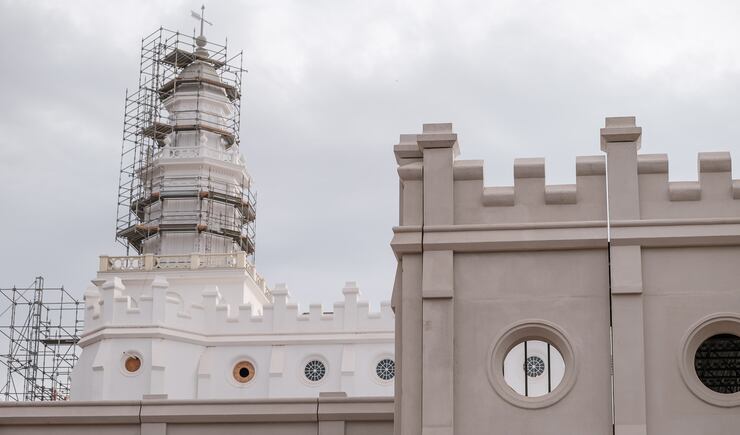
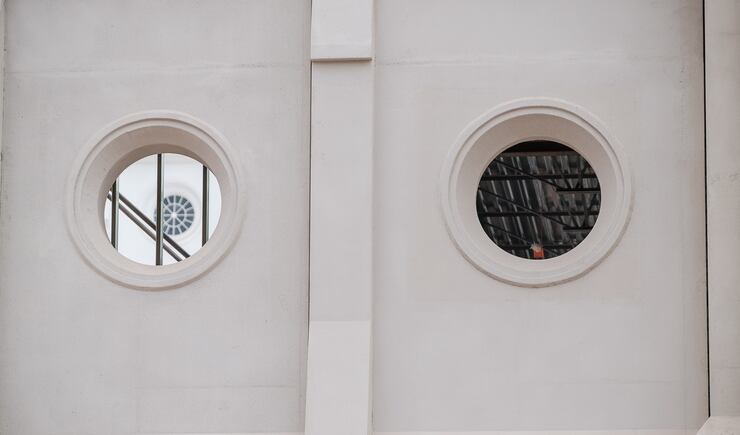
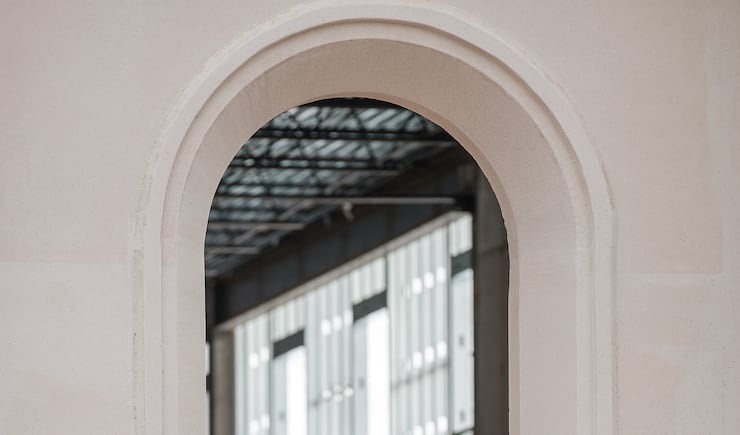
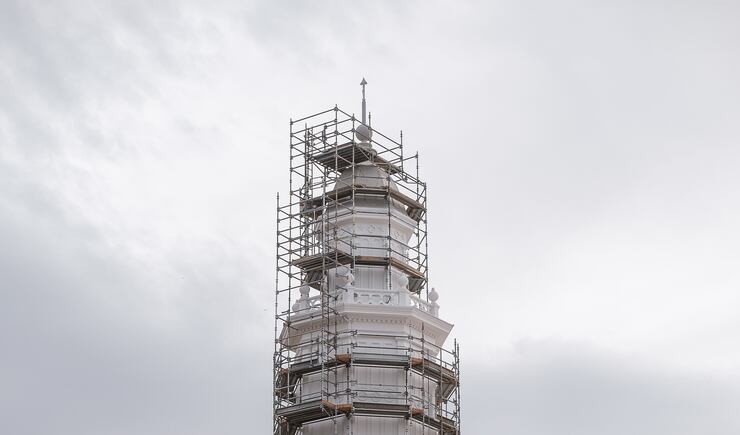
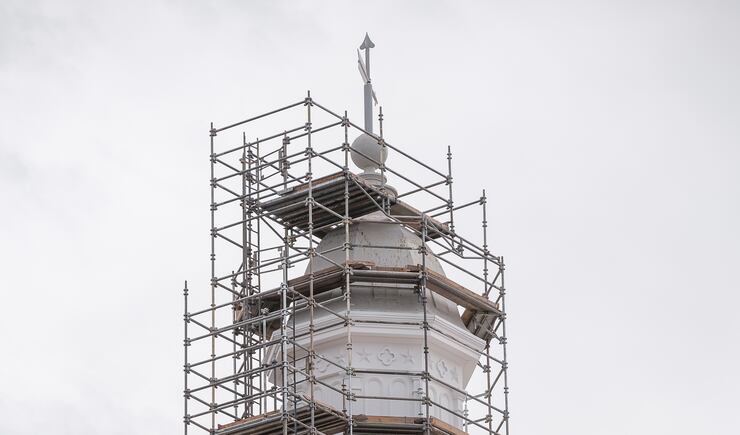
Another major project is opening up space for more ordinance rooms inside the historic building by moving mechanical, plumbing and electrical operations to new additions on the north and west sides of the building.
The north addition is under construction. It is already clear that its exterior will replicate the temple’s 1870s architecture better than the 1970s annex it is replacing.
“It looks more like the historic temple,” said Andy Kirby, director of historic temple renovations. “It’s starting to match it now.”
“We want it to look like it would if the pioneers had added it when they built the temple,” senior project manager Chris Robbins said. The same will be true inside, where floors altered in the 1970s are being redesigned to look more like the 1870s original.
The north addition will be home to two larger sealing rooms, administrative offices, men’s and women’s changing rooms, and a chapel, Robbins said.
Workers have razed the west entrance to the temple that was added in the 1970s, exposing the old pioneer exterior. Where normally the temple’s white exterior glistens in the sun, much of the west side is discolored. Wood boards cover the old windows.
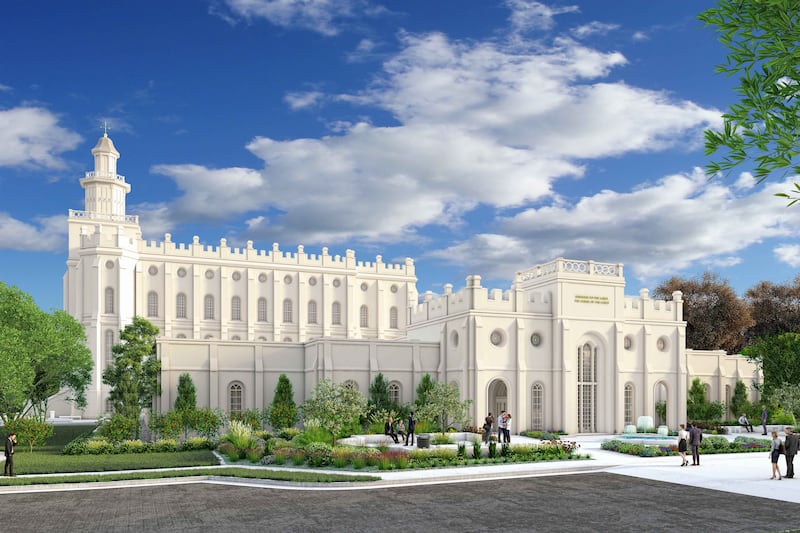
The new west entrance will be built over that siding, and the window openings will become entryways and walkways.
“The west addition will have incredible stairwell and elevator access, which we haven’t had before,” Roberts said.
Crews have also installed new landscaping, adding more trees, bushes, flowers and decorative rock to add to the peacefulness of the temple grounds.
“We want the landscaping to be as mature as we can once the temple reopens,” said Eric Jamison, the site project manager.
The 1970s renovation ended with a temple open house and a rededication in 1975. The open house and rededication for this renovation have not yet been scheduled.
When they are, visitors can be certain of the foundation, Jamison said. The temple has lasted 143 years on its original foundation.
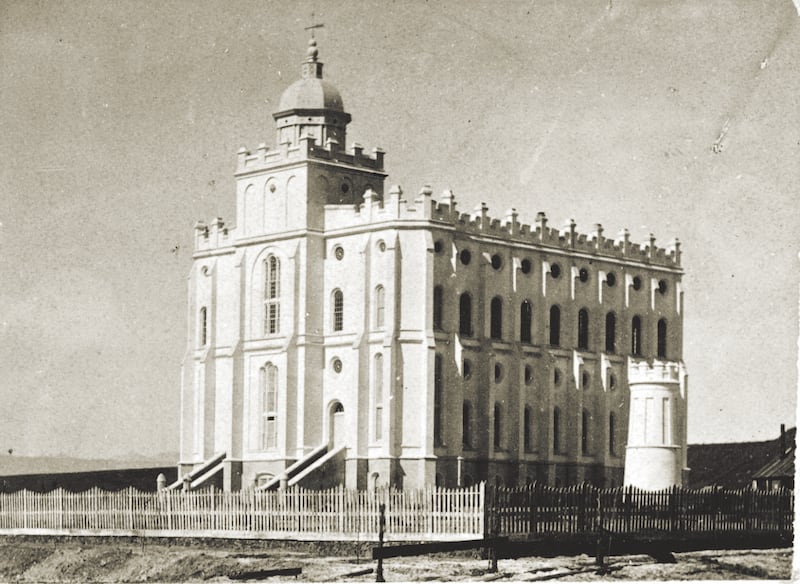
“We’re strengthening it even further, because we’ve added some other weight into it,” Roberts added.
Modern workers are covering support beams with steel, wrapping columns with fiberglass and drilling steel pipes called micropiles 35-40 feet deep into the bedrock below the foundation.
“It’s actually a load transfer,” he said. “Not only are we encapsulating the existing stone foundation with reinforced concrete, we’re taking that load that’s sitting directly on that foundation and transferring load to the micropiles. They are encapsulated in that foundation, physically tied in with steel to the foundation.”
The new work will ensure the foundation will last even longer than it has so far, Jamison said.
It’s what the original builders would want, the project team believes.
“This is Brigham’s temple,” Roberts said. “He and Wilford Woodruff were here for the dedication ceremony. I just can’t imagine the thrill in their heart to have one dedicated. So it’s a humble experience for us, too, and a sacred one to be able to be entrusted to do the will of the First Presidency in this manner.”











